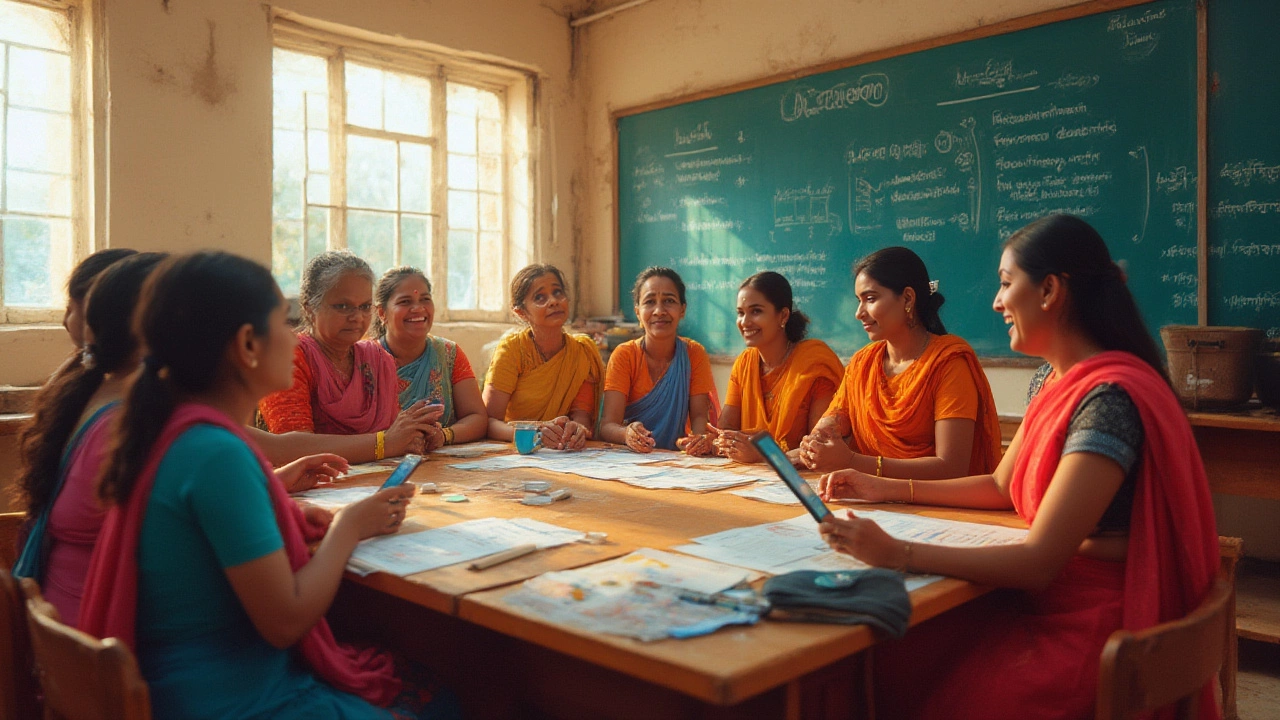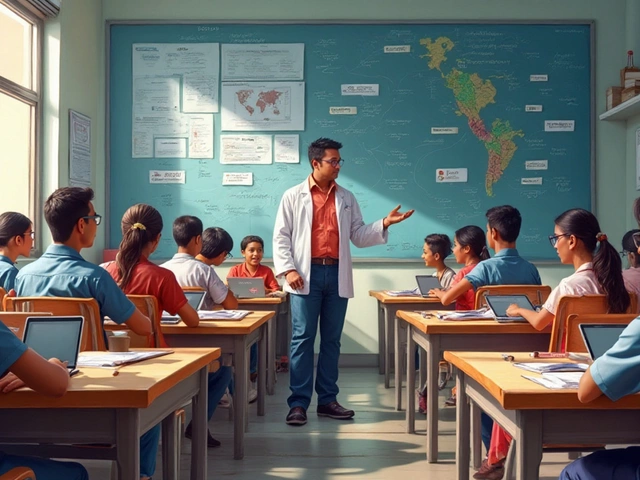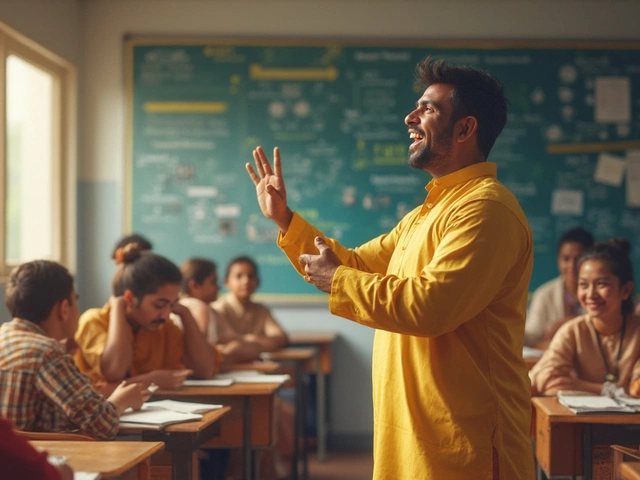The education world moves at a crazy pace. Teachers are expected to juggle more than ever: new tech, changing standards, bigger, more diverse classes. Yet, you don’t hear much about what actually makes a teacher better at their job. Most conversations around school funding, student performance, or education reform skip right over the question—what’s the best way to train a teacher?
What Makes Teacher Training Actually Work?
Ask ten teachers about their professional development and you’ll hear ten different (sometimes frustrated) stories. Some say their training felt like a box to check. Others swear by a single energizing workshop that changed their thinking. But here's the deal: research from the Learning Policy Institute in 2023 found that 90% of teachers said most required training felt irrelevant. Teachers are hungry for training that actually connects with what they do in the classroom—something hands-on, personal, and lasting. No one wants another slide deck on "engagement strategies" that has zero practical value.
Effective teacher training isn’t about big words or thick binders. It boils down to a few simple things:
- It fits real classroom challenges. Teachers want to solve specific problems they face with their unique group of students.
- Active, not passive. Watching someone talk for hours rarely sticks. Training works when teachers participate—role-play, discussion, trial and error.
- Continuous, not just one-time. Imagine a sports coach giving players a pep talk once a year and expecting top performance. Teachers are no different—they need chances to practice, reflect, try again, and grow.
- Support systems matter. Mentors, coaching, or collaborative planning boost the value of any training. No teacher is an island, no matter how good.
High-impact training usually happens when these ideas blend together. For example, lesson study programs that let teachers observe each other’s classrooms, tweak lessons, and share honest feedback outperform typical "sit-and-get" workshops. The trick is making training personal, practical, and ongoing.
Comparing Different Teacher Training Formats
Traditional workshops, online modules, mentoring, peer observations—schools have dozens of ways to boost teacher skills. But not all training is created equal. Let's break down some popular formats and see how they stack up, with recent data for backup.
| Training Format | Pros | Cons | Effective? |
|---|---|---|---|
| One-day Workshops | Quick, easy to organize, covers lots of people | Ideas rarely stick, little follow-up or support | Low, unless combined with practice |
| Online Courses | Flexible, self-paced, good for theory | Easy to lose motivation, limited interaction | Moderate |
| Mentoring/Coaching | Personalized feedback, builds confidence | Time-intensive, needs skilled coaches | High |
| Lesson Study/Peer Observation | Real classroom focus, collaborative | Scheduling is tricky, some teachers feel vulnerable | Very High |
| Professional Learning Communities (PLCs) | Ongoing, team-based, teacher–driven | Needs good facilitation, can lose focus | High |
For example, a 2022 RAND Corporation survey showed that schools using regular instructional coaching and lesson studies saw a 30% higher teacher retention rate and noticeable improvements in student reading scores. In contrast, "one-and-done" PD sessions faded quickly from teachers’ memory.
Key takeway? If training isn’t boosting confidence and real classroom results, it probably isn’t worth much. The gold standard pairs regular, real-world practice with supportive feedback and a dose of community.

Tailoring Training to Different Stages of Teaching
What new teachers need isn’t the same as what a 15-year veteran seeks. The best teacher training gets this. It’s like leveling up in a game—the challenges change, and so should the support.
In the first two years, rookie teachers crave survival skills. They need practical strategies for managing classrooms, planning lessons, and building relationships with students. Novice teachers who get regular coaching and practical workshops are 40% less likely to leave after one year (Harvard EdLD report, 2023). Induction programs that pair new teachers with seasoned mentors—think shadowing, real-time advice, and emotional backing—set up teachers to stay the course.
Second stage: Teachers with a few years under their belt want to hone skills and try new stuff. Professional learning communities and peer observations become valuable here. Imagine teachers swapping ideas, analyzing student work, and decoding what really works for kids. It brings more energy and less isolation. Targeted micro-credentialing—like in trauma-informed instruction or STEM strategies—lets teachers pick up new skills directly linked to their classroom needs instead of a grab-bag of broad advice.
For experienced pros, the focus shifts from learning the basics to leading others. Veteran teachers do well with leadership training, advanced instructional coaching (sometimes mentoring new teachers), and subject-specific mastery courses. Many districts now offer “teacher leader” programs, prepping the classroom legends to coach, design curriculum, or innovate on a higher level. Plus, experienced teachers often benefit from chances to research, develop new programs, or lead school-wide projects.
One-size-fits-all doesn’t cut it at any stage. The schools seeing the best results are flexible, letting teachers set some of their own goals and choose relevant training paths.
The Role of Technology in Modern Teacher Training
Technology is everywhere in schools, so it makes sense that it’s reshaping teacher training too. But tech is a tool, not a cure-all. Online PD platforms like Edmodo, Coursera, and Google for Education offer 24/7 access to resources, webinars, and courses. This allows teachers in rural or remote areas to get the same quality of training as those in big cities.
The best tech-based training has a few things in common:
- It’s interactive—think online micro-lessons, live Q&As, or groups sharing practical classroom videos.
- It offers immediate feedback. Some new platforms give instant tips when teachers submit lesson plans or practice teaching techniques on video.
- Blended is better. When tech PD gets combined with in-person teamwork, the results last longer. For example, New York City’s blended micro-credential pilot saw 65% of teachers report “a positive shift” in classroom skills and student engagement.
But it’s not all smooth sailing. Without a strong purpose and personal coaching, online modules leave a lot of teachers cold. Many log the required hours, click through quizzes, then forget most of what they "learned." Busy teachers have little patience for low-quality tutorials or generic how-to videos. The strongest programs use technology to build community—discussion boards, virtual lesson swaps, or peer feedback loops. It’s all about making things stick and feel connected, not just ticking off another online box.

Real-World Tips for Choosing the Right Teacher Training
Anyone in the education game hear this question all the time: which training is best for teachers? The honest answer: it depends. No two classrooms (or teachers) are ever quite the same. Teachers should look at what’s offered with a practical eye—will it help with tomorrow’s lesson, next month’s challenges, or next year’s goals? Here’s how to make training work for you:
- Start with your real needs. Before signing up, jot down two or three challenges you face. Does the training promise to help with those?
- Look for built-in practice and feedback. Good training lets you test-drive ideas and get real input from peers or mentors.
- Stick with programs that last more than a day. A workshop might spark new thinking, but lasting change comes from multiple touchpoints—follow-up sessions, coaching, team meetings, or lesson studies.
- Ask about impact. Does the training share data or stories of actual results, not just theory? If possible, talk to colleagues who've already tried it.
- Insist on choice. If training feels one-size-fits-all, see if you can pick a route that fits your students and your teaching style.
If you’re a school leader, try to give teachers what the research (and their gut) says works: steady, relevant, hands-on, and supported training. Build time into the schedule and create space for teachers to refine their craft, together. The payoff, both for retention and for student achievement, is too big to ignore. As everything changes around us, the best training grows with it—practical, adaptable, and real.






Write a comment: